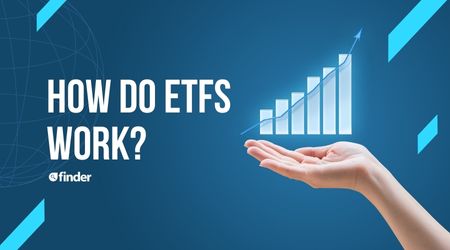If you know your way around the stock market, then trading when the market is shifting fast can be a profitable challenge. Here’s what to consider when investing in volatile markets including 3 popular investment strategies.
What is a volatile market?
On a line graph, a volatile market looks like a steep roller-coaster. Stock prices rise and fall significantly in a short time frame – within hours, even. It’s not for everyone but can be particularly thrilling for some investors.
Volatility is usually measured by standard deviation. Your trading platform may have volatility indicators among its advanced charting features. These can help you see how volatile the market is. For example, a Bollinger Band is based on a moving average price with a standard deviation band above and below this.
When the market is volatile, you often see wide price variations and increased trading. Greater market volatility tends to indicate higher risk. See if your broker has information on volatility including lists of volatile stocks.
What causes a volatile market?
There can be a variety of factors at play. Sometimes, it can be 1 major factor, such as the coronavirus stock market crash. In other cases, it could be a combination of factors such as:
- Economic releases
- Company news
- Initial public offerings (IPOs)
- Unexpected earnings results
MUST READ: Before you start trading in a volatile market
Make sure you’re aware of the added risks, and understand that you may see the value of your investments drop. It’s sensible not to invest more money than you can afford to lose, and to make sure your living expenses are covered.
How do I prepare for a volatile market?
If you want to prepare for investing in volatile markets, then it’s smart to diversify your portfolio by putting your money in different assets types, sectors and/or countries. That way, you have backup investments if a sector, country or asset becomes volatile.
It’s also worth thinking longer term. Volatility is like turbulence when you’re flying: it does pass, you just need to keep calm.
Lastly, remember that you don’t know when markets will become volatile. Don’t tell yourself that you’ll prepare for volatility later. It’s smart to prepare now.
What strategies can you use when the market turns volatile? Here are 3 popular strategies to consider.
Strategy 1: Ignore it
This strategy speaks to taking a long-term view. For it to work, you’ll need a well balanced and diversified portfolio of investments that you plan to hold for the longer term. If you don’t have any investments, it’s probably not the best time to start.
You’ll also need to anticipate having plenty of years to invest. If you’re going to need the money soon, ignoring volatility isn’t a sensible strategy.
Try not to look at your trading apps more often than you normally would, to avoid making rash decisions or panic selling.
Strategy 2: Invest in low-risk securities
This strategy is generally a better option if you think you’ll need your money in the next few years or if you panic when your investments start to fail (although that may be a sign that investing isn’t right for you).
Some stocks are known as “safe haven” investments, meaning that they tend to do better than other stocks when markets are going wild. Safe haven investments include government bonds, gold and currencies.
If you want less risk, consider moving your money into the types of investments listed below.
Government bonds
Government bonds are debts issued by the government. You’re essentially loaning the government money, and in return, it gives you a set amount of interest at regular periods. At the expiry date, the government gives you back your initial investment.
Gold
In times of volatility, gold tends to fare quite well. It’s an asset that people tend to turn to as a safer investment, typically as part of a diverse portfolio in times of uncertainty and while other stocks are on the decline.
This means that as long as people believe gold to be a safe haven and buy it because it’s a safe haven, it will be a safe haven.
Currencies
Not all currencies are considered to be safe havens. It generally depends on how stable the government behind the currency is. The Swiss franc, for example, is thought to be a safe haven because the Swiss government has been pretty stable.
The euro, the US dollar and the Japanese yen are 3 more examples of currencies that are treated as a safe haven.
Defensive stocks
Defensive stocks (as opposed to cyclical stocks) are stocks for companies that cover basic needs, such as food, energy and water. During market fluctuations, people still need these items, which generally keeps the value of these stocks stable.
Strategy 3: Options trading
Some investors consider trading options in volatile markets. Options trading lets you “lock in” a price without the obligation to buy. You pay a premium for it, which means (like any investing) that it’s not risk-free. There are some options strategies that you can consider based on the ways you believe the stock prices will move.
Pros and cons of investing in volatile markets
Pros
- Can be exciting, despite the uncertainty
- Can enhance your understanding of the stock market and test the diversity of your portfolio
Cons
- You may encounter more broker downtime during volatile markets
- If there are execution delays, you can find yourself paying a different price
- Riskier than investing in non-volatile markets
Ready to invest? Open a stock trading account
Finder Score for stock trading platforms
To make comparing even easier we came up with the Finder Score. Trading costs, account fees and features across 10+ stock trading platforms and apps are all weighted and scaled to produce a score out of 10. The higher the score the better the platform - simple.
Bottom line
Trading in a volatile market can be a roller-coaster in more ways than one. It’s a risky time to invest and certainly isn’t for beginners. There can be great opportunities if you do your research. If you do go for this strategy, it may be worthwhile to make sure your portfolio is diversified.
More on investing

What are the best stocks for beginners with little money to invest?
Want to dive into investing but don’t have much to spend? Take a look at these types of stocks.
Read more…
Meme stocks: What they are and examples of popular stocks
Meme stocks can produce large gains in short periods, but the stocks are volatile.
Read more…
How do ETFs work?
Your guide to how ETFs work and whether this type of investment is right for you.
Read more…More guides on Finder
-
Best paper trading platforms and demo accounts for 2025
How to choose the best paper trading platform to help you learn the ins and outs of investing.
-
Quantum computing stocks
Microsoft, IBM, IONQ, Rigetti and Quantum Computing are some of the top stocks to buy in this category. See how to get started here.
-
How will tariffs affect the stock market?
Find out how the Trump tariffs will impact the stock market and explore Canadian stocks that may be resilient amidst tariffs.
-
Can I buy DeepSeek stock in Canada?
DeepSeek isn’t publicly traded, but you can invest in similar companies or swoop in on stocks impacted by the DeepSeek effect.
-
What are the best stocks for beginners with little money to invest?
Want to dive into investing but don’t have much to spend? Take a look at these types of stocks.
-
Trading promos & investment account bonuses for 2025
Enjoy perks like free trades and cash back when you open a stock trading account with these online broker promotions.
-
TD Easy Trade review
Use this self-directed trading app to learn the basics of investing with a streamlined app and a number of free trades annually.
-
Best renewable energy stocks
These are the best renewable energy stocks to buy now in Canada.
-
Best stocks to buy right now in Canada
Finder’s unique algorithm found the 20 best TSX stocks to buy right now.
-
TD Direct Investing Review
Make quick and easy trades using this reputable online trading platform from TD.
